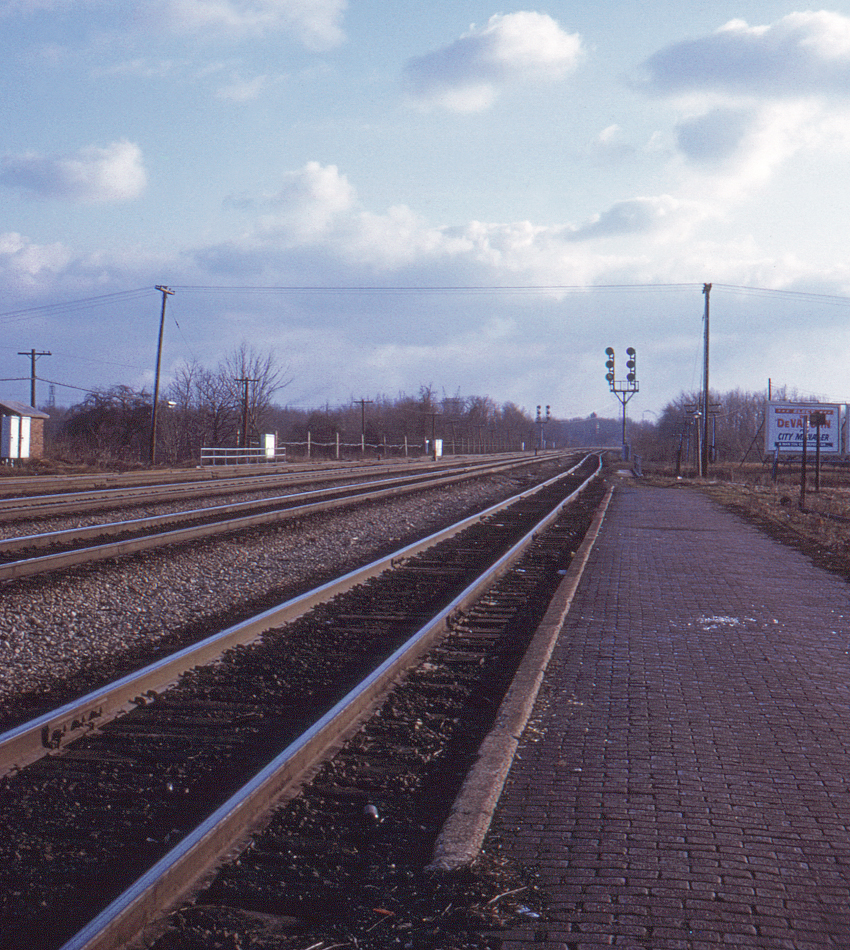

Looking east from the platform of the New York Central's Ashtabula, Ohio station one sees one of the remaining segments of the Central's famous "four-track way." Conversion of the Cleveland to Buffalo mainline to two tracks under Centralized Traffic Control was completed in October of 1956 under then-New York Central president Alfred Perlman, and the characteristic tri-light signal brackets date from that time. This line was originally part of the Lake Shore & Michigan Southern.
Between the two signals, though not visible, is the bridge over Ashtabula Creek which was the site of the "Ashtabula Horror," one of the nineteenth-century's worst rail disasters when the bridge collapsed under a passenger train due to poor design and many of the surviving passengers were incinerated in the wreckage of the wooden, stove-heated coaches. The bridge's engineer, Charles Collins, was found dead a few days later after testifying for the Ohio Legislature, a death originally considered suicide but long afterwards determined to be murder. The president of the LS&MS railroad, Amasa Stone, who had pushed through the controversial bridge design despite warnings, committed suicide several years later.